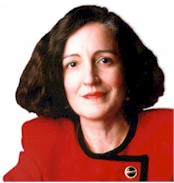
Kennard
FCC Report on Multichannel Video Programming Addresses
Broadband
(January 20, 2000) The FCC issued its sixth annual report to the Congress on multichannel video programming. As usual, much of the report deals with cable TV competition. In addition, the report addresses developments in broadband Internet access services. It concludes that analog telephone dial-up modems will remain the principal means of accessing the Internet for at least the next several years.
| Related Documents (links to files in the FCC web site) |
|
Full Text of Report (huge MS Word file). |
|
FCC Summary of the Report (HTML). |
| Statement by Chairman Kennard (HTML). |
| Statement by Commissioner Tristani (HTML). |
The report is titled the Sixth Annual Report In the Matter of Annual Assessment of the Status of Competition in Markets for the Delivery of Video Programming (CS Docket No. 99-230). It was adopted on December 30, 1999, but not released until January 14, 2000. The Federal Communications Commission is required to prepare the report by the Cable Act of 1992.
Some of the major findings of the Report were as follows:
 |
|
| William Kennard |
"Americans still need more competition and choice in multichannel video. Competition is the best way to reduce cable rates for consumers," said FCC Chairman William Kennard is a press release. "The satellite industry currently offers the most meaningful competition to cable. I am pleased that late last year Congress gave satellite carriers the authority to offer local broadcast stations to their customers. The FCC is aggressively implementing this new legislation, well ahead of the timetables set by Congress, because it gives consumers more choice among video providers and promotes fair competition in a market that historically has been dominated by a single provider."
The report also contained considerable detail on the technology, availability, and number of users of broadband Internet access by cable, as well as by DSL and satellite.
"Since our last report, cable operators have been upgrading their networks and offering new services at a rapid pace. Some analysts estimate that most cable plant upgrades will be completed over the next two years." [See ¶ 51.]
However, despite the rollout of broadband services, "most Americans access the Internet using telephone lines at speeds of less than 56 kilobits-per-second (“Kbps.”). In January 1999, 65% of Internet users were using analog telephone dial-up modems with an average speed of access of 33 Kbps." [See ¶ 55.]
Moreover, the Report predicted that "telephone dial-up will remain the principal means of accessing the Internet for at least the next several years." [See ¶ 55.]
| CABLE MODEM CUSTOMER RANKINGS 9/30/99 Source: Kinetic Strategies. |
|||
| Cable Operator |
Cable Modem Subscribers |
Q3 Subscriber Additions |
Q3 Growth |
| Time Warner |
245,000 |
59,000 |
31.7% |
| MediaOne |
173,000 |
33,000 |
23.6% |
| Shaw |
147,000 |
27,000 |
22.5% |
| Cox |
140,474 |
28,468 |
25.4% |
| Rogers |
125,400 |
24,900 |
24.8% |
| AT&T |
113,600 |
30,600 |
36.9% |
| Comcast |
112,900 |
18,700 |
19.9% |
| Cogeco |
41,500 |
6,500 |
18.5% |
| Videotron |
36,000 |
11,000 |
44.0% |
| Cablevision |
31,474 |
9,218 |
41.4% |
|
Other |
240,000 |
||
|
Total |
1,403,333 |
||
"Last year, we reported that as of August 31, 1998, more than 15 million homes were passed by Internet access service through cable modem technology, with approximately 300,000 subscribers. As of July 1999, cable modem service was available to 32 million homes in the United States and Canada with more than 1 million subscribers by July 1999." [See ¶ 58.]
The report also provided a breakdown of subscribers by cable company. The report relied on statistics provided by Kinetic Strategies' Cable Datacom News.
Kinetic Strategies estimates that "there will be 15.9 million installed cable modem customers in North America by year-end 2003, up from a projected 1.8 million at the end of 1999." [See, Kinetic Strategies, Cable Modem Market Stats & Projections, November 9, 1999.]
The report next addressed Internet access by DSL. It concluded that "telephone company xDSL technologies currently are the most significant competitors to Internet over cable broadband." [See ¶ 61.]
"By June 1999, there were 159,150 xDSL subscribers compared to more than one million cable Internet access subscribers. The rollout of DSL and other broadband technologies, however, is accelerating. Analysts predict that over 30 million telephone lines will be able to support xDSL services by the end of 1999, compared to the nearly 32 million homes passed by Internet access over cable." [See ¶ 62.]The report also gave briefer attention to Internet access by satellite services.
The report also addressed mergers involving companies which provide broadband Internet access.
"In April 1999, AT&T announced its intention to acquire MediaOne and its nearly five million subscribers for approximately $69 billion. Century, previously the tenth largest MSO, was acquired by Adelphia for $5.2 billion in March 1999. In July 1999, Vulcan Ventures, owned by Microsoft co-founder Paul Allen, announced its intention to acquire Charter (which had previously acquired Falcon), one of the largest cable MSOs. In April 1999, Comcast acquired majority interest in Jones Intercable. In May 1999, Cox announced its intention to acquire TCA and its 1.8 million subscribers for $3.6 billion. In November 1999, Comcast agreed to buy Lenfest Communications from AT&T for $6.71 billion in stock and debt. These transactions appear designed to better position the cable operators to deliver Internet and telephony services." [See ¶ 166]
 |
|
| Gloria Tristani |
FCC Commissioner Gloria Tristani also wrote a separate opinion to complain about the Report's focus on broadband technologies, and the concentration of control of the content of programming.
"But this Report is not about cable's entry into new markets like Internet access or telephony." She continued that "... plain old one-way video service ... consumers should not be forgotten in our rush to continue sharpening the cutting edge."
Her biggest worry about old fashioned one way programming is that "to a significant extent, the video programming that the American public receives is being funneled through a handful of media gatekeepers (not to mention the vast magazine, newspaper, publishing and Internet properties owned by these entities)."
|
47 U.S.C. 548(g) provides in part as follows: "(g) Reports. The Commission shall ... annually report to Congress on the status of competition in the market for the delivery of video programming." |
The report was limited to multichannel video programming. Commissioner Harold Furchtgott-Roth wrote a dissent in which he argued that the FCC should also have considered other "forms of video programming that do not come bundled in channels but that are still part of the general video distribution market ..."
He added that "The fact that a large number of MVPD subscribers opt for cable service is not in itself a reflection of a lack of competition in the market for video programming. ... The objective here should not be to drive down cable's market share, but rather to analyze the options available to consumers."